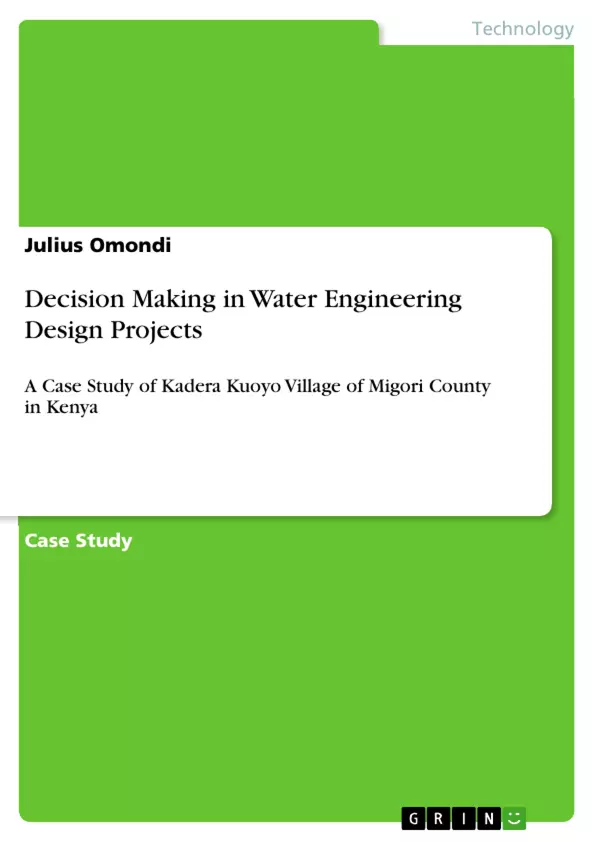During feasibility studies, Water Engineers face a daunting task in determining the most suitable techniques to supply water for consumption. This study was done to demonstrate the basic principles that all Water Engineers should consider during decision making in water engineering design projects. Using a case study, the proposed method for water provision was arrived at by assessing various combinations of water supply system components and finally selecting the most suitable combination. Finally, this study selects the most suitable method for supplying water to Kadera Kuoyo village i.e. Rain and spring water conveyed in pipes by gravity. By implementing this system in Kadera Kuoyo, child mortality is reduced and agriculture practised throughout the year. Health and economic status of Kwoyo village will improve.
Inhaltsverzeichnis (Table of Contents)
- Abstract
- Introduction
- Materials and methods
- Location
- Soils
- Precipitation
- Socio-economic activities
- Methods
- Results and Discussion
- Conclusion
- References
Zielsetzung und Themenschwerpunkte (Objectives and Key Themes)
This study aims to demonstrate the fundamental principles involved in decision-making during water engineering design projects by examining a case study of Kadera Kuoyo village in Kenya. It explores various combinations of water supply system components, assesses their suitability, and ultimately selects the most efficient and sustainable approach to address water scarcity in the village.
- Water supply system design and selection
- Sustainable development goals in water engineering
- Water scarcity and its impact on rural communities
- Assessment of alternative water supply options
- Impact of water access on health and economic development
Zusammenfassung der Kapitel (Chapter Summaries)
- The abstract introduces the study's purpose, which is to demonstrate decision-making principles in water engineering design projects. The case study focuses on Kadera Kuoyo village in Kenya and explores various combinations of water supply system components, ultimately selecting the most suitable option.
- The introduction provides background information on Kadera Kuoyo village, including its location, water sources, and the challenges of water scarcity. It connects the study to the Sustainable Development Goals and highlights the importance of effective water management.
- The "Materials and methods" chapter details the study's methodology, including the location, soil characteristics, precipitation patterns, socio-economic activities of the village, and the assessment methods employed.
Schlüsselwörter (Keywords)
The main keywords and focus topics of the text include: water supply, sanitation, efficiency, sustainability, water engineering, rural communities, decision-making, design projects, feasibility studies, water scarcity, water access, Sustainable Development Goals.
- Quote paper
- Julius Omondi (Author), 2017, Decision Making in Water Engineering Design Projects, Munich, GRIN Verlag, https://www.grin.com/document/477892



